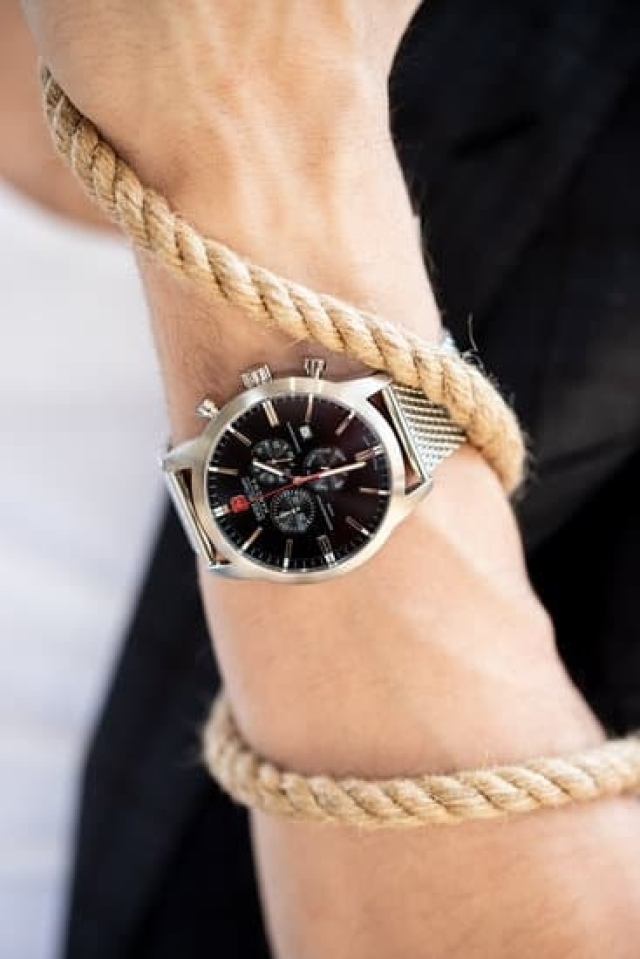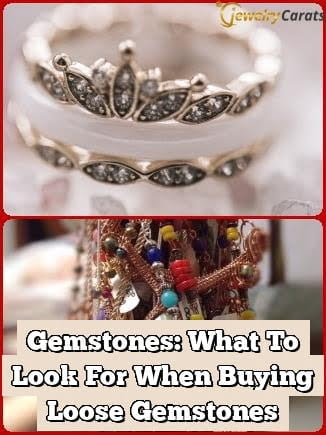Making jewelry with gemstones is a craft activity that has been enjoyed for centuries. There is evidence of jewelers and lapidary artisans crafting stunning pieces of adornment dating back to pre-history.
Today, making beautiful pieces of jewelry with gems is easier than ever, with the advent of new technologies and tools. While it is a fun activity for many craftspeople, there are some safety considerations when working with metal and gemstones that should always be taken into consideration before embarking on any jewelry making project.
Gemstones come in all shapes and sizes, and there are different techniques required to work with each type. The most common materials used to make jewelry are precious stones such as rubies, emeralds, sapphires, diamonds and pearls as well as semi-precious stones like amethyst, agate and tourmaline.
Different cutting-styling tools must be used depending on whether the stone is soft or hard. Taking time to learn about these stones can help ensure that projects lay out harmoniously when designing pieces of jewelry from them.
Designing jewelry from gemstones requires developing an understanding of how color combinations interact visually as well as an understanding of the physical properties of each type of stone. These components are both necessary in order to create interesting and harmonious designs that will enhance any piece of jewelry made from gemstones.
Before starting any project using stones it is important to remember that proper protective gear should always be worn in order to protect from any potentially hazardous debris created during the process – including a face mask, protective gloves, dust masks and safety glasses. Furthermore familiarizing oneself with appropriate techniques for drilling, setting gems in metals (or other materials), or carving them will help bring value to every piece created while also promoting safety during construction process.
Overall making jewelry with gemstones can be incredibly rewarding – not only creating stunning results but also providing insights into history long since passed by allowing us recreate unique works which first saw life centuries ago.
With proper tools, research on cut/shape/designs for each individual stone types combined with patience, research into the correct techniques for completing each task correctly a creative Jeweler can produce amazing results from these gorgeous specimens which sometimes even surpasses those crafted hundreds year ago.
Tools and Supplies Needed for Jewelry Making with Gemstones
There is a variety of equipment and supplies needed to successfully make jewelry with gemstones. What kind of equipment is best for each person depends on the type of gemstones and the design of the jewelry that is being created. There are also some basic items required by almost everybody who likes to create handmade items.
- Basic Jewelry Making Tools: Filing tools, drill bits, tweezers, hammers, wire cutters/pliers, rulers, anvils and mandrels.
- Jewelry Findings: Jump rings, earring backs and posts, chain maille links and charms.
- Stringing Materials: Elastic cord, crimp beads, ribbon or fine leather lace.
The easiest place to acquire most of these tools and supplies is online from well-known retailers such as Michaels or Joann (for general tools) and Fire Mountain Gems (for findings specifically made for making jewelry with gemstones). For extra convenience when shopping online many vendors offer complete kits containing all the necessary supplies for making various types of jewelry.
When working with precious stones like diamonds and rubies it is wise to use specialized sturdy tools designed specifically for them. A diamond tester can be used to identify the true nature of any diamond-like substance before beginning work on it.
There are numerous specialty tools available in the market which aid you in setting stones in your project. Stone clasps are most commonly used when dealing with precious gems so they don’t move around too much while being worked on. Different types of ring clamps can hold rings securely while sharpening them or polishing them up.
Suggested Gemstones and Combinations for Jewelry Making
When it comes to using gemstones in jewelry making, there are a variety of options available. Along with being stylish and beautiful, choosing the right gemstones can imbue your creation with symbolic meaning. For example, turquoise has long been associated with good luck, while ruby is traditionally used to symbolize love and passion. Here we will look at some suggested gemstone combinations for purchasing and making of jewelry pieces that are both trendy and meaningful.
Mixed Color Palettes
One of the hottest trends in jewelry fashion is mixing multiple colors together into one piece. These color palettes tend to be composed of two or three contrasting shades and/or tones to create a balanced yet eye-catching look.
Using one of these mixed color schemes when selecting your gemstones is a great way to add some modern flair to a piece while also taking advantage of their symbolism. Popular combinations include ruby and sapphire, blue topaz and peridot, rose quartz and lapis lazuli, emeralds paired with black onyx or pearl, opal with amethyst quartz, as well as labradorite mingled with tiger’s eye or citrine quartz.
Metallic Accents
Adding metallic accents can make all the difference when creating jewelry from gemstones. Whether using yellow gold wires as settings for gemstones or combining silver clasps with sterling metal beads among stone strands, adding metal into your design can give the overall product more pop¬ – both visually and metaphorically. Nowadays you will find many popular pieces crafted using gold/silver/bronze accents amongst various colored semiprecious stones like turquoise, malachite or aquamarine.
Classic Combinations
If you’re looking for classic designs with timeless symbolism often look no further than timeless eclectic combinations like jade paired with diamonds/or rubies; tourmaline coupled pink pearl beads; tanzanite infusing sparkle onto lapis’ richness; fiery red garnets surrounding obsidian’s nightmarish hues; icy blue agates caressed by rose quarts sugariness etc. Such gems truly manage to bring forth powerful magical properties alongside aesthetic beauty that last through generations.
Sourcing Gemstones and Determining Quality
When crafting jewelry using gemstones, it is essential to ensure that the highest quality stones are sourced. When choosing gemstones for jewelry-making, the most important factor to consider is the stone’s quality. Today, there are countless options of where to source gemstones.
Online Shopping
The most convenient way to shop for gemstones is online from established retailers or directly from a supplier in a different country. Many of these websites focus on customer satisfaction which enables customers to view samples and receive clear photographs of their item before they purchase. In addition, the description of each gemstone includes details such as origin, measurements and options for customization.
Another benefit of buying online is that shipping often only takes a few days and refund policies are often provided in case anything goes wrong with your item. However, many customers prefer to buy locally as it is easier to inspect and pick out specific stones if it isn’t possible to receive online pictures or detailed descriptions are inadequate for your purpose of evaluating the gemstone’s quality or suitability for your project.
Retail Shopping
Buying stones at retail stores has its advantages as well. It allows customers to physically examine each piece first-hand thereby providing them with more information regarding shape, color, texture and blemishes that cannot be seen in photographs alone.
Additionally, customers can observe how one stone compares against another when held side by side under various lighting settings – this allows them to make meaningful comparisons between two different pieces more accurately then if relying purely on internet images.
Furthermore, some retail shops have professional jewelers on hand who can help provide detailed advice when selecting a particular stone for jewelry-making purposes; this can be extremely helpful when coupled with the convenience mentioned before about being able to directly inspect individual gems without waiting on delivery times like you would if purchasing items over an online store instead.
Finally, one other advantage of shopping at local stores is that they often stock higher quantities than those available through online outlets meaning more choice when selecting items suitable for use in jewelry-making projects; this means reducing lead times when ordering bulk quantities which may be important if you have deadlines and timeframe constraints concerning completion timescales for each stage of your project workflows.
Cleaning and Preparing Gemstones for Jewelry Making
Making jewelry with gemstones requires the right materials and tools. Jewelry makers will want to first inspect the stones they have chosen for significant inclusions, fractures, chips, and flaws that may make them unsuitable for the intended design of the piece. Next they can take steps to clean them thoroughly so that any dirt, dust and oils are removed prior to mounting. This can be done by scrubbing with a soft toothbrush or alternatively using an ultrasonic cleaner bath.
Treatments
Depending on which stones one chooses to use, there are various treatments that may need to be performed before the stones can be used in jewelry making. The most common treatment is heat treating and this process generally involves raising or lowering the temperature of the stone which enhances colour saturation or clarity with no damage to its strength.
Recutting & Polishing
When selecting suitable stones for jewelry pieces it is important to consider their shapes. Professional lapidaries may be employed to recut a stone if it has been cut poorly at source or simply needs an alteration for size/shape purposes in order to fit into the desired design.
Once a gemstone is ready for use in jewelry making it will need thorough polishing on both its surfaces and edges in order to give it a good finish as well as protecting against metal wear during later handling stages of its construction. A rotary power tool can also be used on harder metals such as diamonds but softer materials require polishing on greater quality cloths/wheels with specialised compounds designed specifically for each individual type of gemstone being handled.
Jewelry Design Techniques for Gemstones
Jewelry made with gemstones can range from expressive and complex designs to simplistic and bold statements. A jewelry designer can make a piece of jewelry personalized to express one’s own individual style by strategically arranging patterns, colors, shapes, and settings into a stunning work of art.
One technique that jewelry designers use to create beautiful jewelry is to focus on the shapes and sizes of the gemstones being used in order to create aesthetically pleasing patterns. Depending on the desired look of the piece, shape can be used to create symmetrical flow or angular movement. Another design element is color: warm toned gems like citrine often bring a feeling of richness while cool toned stones like turquoise give an airy effect.
The use of color has been found to help stimulate emotions in the wearer; blue stones such as lapis lazuli are calming whereas yellow gemstones such as yellow sapphire are energizing. Additionally, gemstone size affects the overall aesthetic look; larger stones create eye-catching appeal while smaller accent stones provide contrast.
The setting in which the gems are held is an extremely important design element for creating spectacular jewelry pieces. Bezel settings offer protection for fragile stones while halo settings emphasize central jewels with surrounding ornamental aspects. Prong settings allow extra light to enter deeply set stones making them sparkle even more.
One overlooked design form when making jewelry with gemstones is pattern alteration – rearranging how gemstones interact within each other as either complimentary or counteracting colors, shapes or sizes depending on what kind of impact the designer wants each stone to have.
This atomization of details allows for creative expression through complex yet balanced themes that intertwine seamlessly throughout the piece conveying ingenuity in design concepts and unique expression through contrast or cohesion between different elements within a single piece of jewelry.
Ultimately, it is up to each individual artist and their level of skill in incorporating these many different elements in side-by-side harmony that makes gemstone jewelry so fascinating for both creator and admirer alike regardless if traditional or modern minimalist styles prevail – a balance between exciting complexity contrasted by geometric simplicity truly encompasses why making jewelry with gemstones will always remain popular today.
Techniques for Setting Gemstones in Jewelry
The shine and sparkle of gemstones makes them perfect additions to jewelry designs. With careful attention and practice, gemstones can be successfully set into a variety of forms and styles of jewelry. Here are some of the most common ways to set a gemstone in jewelry:
- Prong Setting – This technique is suitable for any size or type of gemstone. It uses prongs or claws crafted from metal to hold the stone in place. Prongs can be made from gold, silver, platinum, titanium or other metals.
- Bezel Setting – This technique involves sawing out a small section from the base of your item and then creating a metal cup around the stone which rests within the cut out section. It provides protection for the stone whilst still allowing onlookers to marvel at its brilliance.
- Flush Setting – This technique creates secure settings with no visible prongs or raised parts that could catch on clothing or ideal for those who appreciate jewelry designs without any metal showing. Using this technique, stones are held securely within indentations in a piece of jewelry.
Most experienced jewelers will be familiar with these various settings but beginners should look online for step-by-step tutorials that outline each one in detail, complete with images outlining each part of the process. Metalsmiths may purchase wax setting models so they can practice each setting before beginning their design work on actual pieces.
In addition to learning proper technique for setting gemstones, it’s important to understand how best to secure gems into corresponding materials with relative ease and success during installation. Varying degrees of heat must be applied depending on if you are melting gold, silver or platinum alloys as well as dependant on what kind of material you use including waxes and plastics used mainly in casting techniques.
Goldsmiths should also use specialized pliers when handling their gems during installation as certain gems are notoriously brittle and delicate due to their hard mineral composition.
Tips for Finishing and Maintaining Jewelry with Gemstones
Finishing a piece of jewelry that uses gemstones is the final and often most important step to ensure your creation is secure and ready to be worn. Crimping pliers, specialized tools for wrapping wire with many shapes, are essential when finishing a bezel set, a common method used to fit a stone in place that uses fine-gauged metal.
When using multi-stranded cables, needle nose pliers can be used for crimping back the end as well as trimming off any excess material. Once everything is secured in place, applying a tissue enhancer can help bring out the color of the gemstone and make it appear more vibrant.
To maintain jewelry featuring gemstones it’s best to keep pieces away from harsh chemicals like perfumes or chlorine. These substances can discolor or tarnish the metal and even damage some types of stones. A polishing cloth with special compounds will help restore shine and color if needed while soaking pieces in warm soapy water followed by an air dry should be done occasionally.
Lastly, storing or traveling with jewelry featuring gemstones should always be done with care, preferably using individual pouch wrap linings or microfiber cleaning cloths in dedicated containers such as plastic bags. Pouches are also handy for keeping different metals apart from each other since they have different reactivities and may cause discoloration on contact with time wearing them together.
Anti-tarnish agents can also be used for gemstone jewelry that regularly experiences exposure to air and light which depreciates its luster overtime accompanied by loss of brilliance. It’s highly recommended when applied correctly to prevent oxidation effects that negatively impact the appearance of these materials at a molecular level through implementation of micro-environmental inhibitors designed specifically for gems.
Reapplication at least twice a year ensures brilliancy is kept alive even if long periods have gone by without being worn or received maintenance including routine buffing or effective stored solutions mentioned earlier like soft cloth wraps for enhanced safety against dust particles accumulating on jewels while stored away safely in compartments giving you peace of mind when not quickly accessed.

Welcome to my jewelry blog! My name is Sarah and I am the owner of this blog.
I love making jewelry and sharing my creations with others.
So whether you’re someone who loves wearing jewelry yourself or simply enjoys learning about it, be sure to check out my blog for insightful posts on everything related to this exciting topic!





